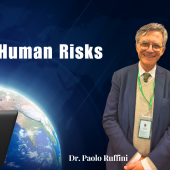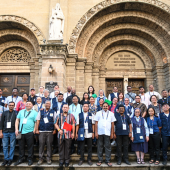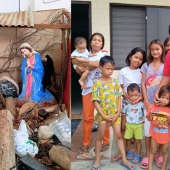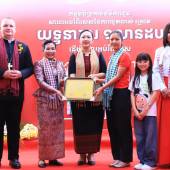SIGNIS Asia Assembly 2025: Communicators called to build bridges of hope and truth
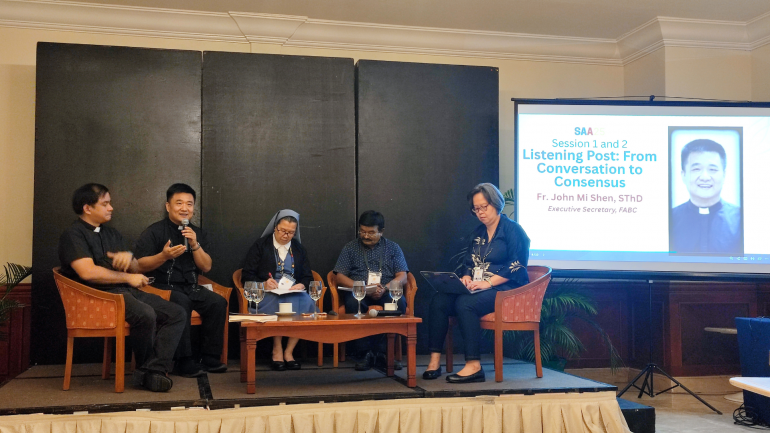
The second day of the ongoing SIGNIS Asia Assembly, being held in Manila from October 21 to 25, was marked by deep reflection, lively dialogue, and a renewed call for Church communicators to become authentic witnesses of hope in today’s digital world.
The day opened with a video message from Bishop Junie Maralit, Chairman of the Federation of Asian Bishops’ Conferences (FABC) Office of Social Communication (OSC). In his inspiring address, Bishop Maralit reminded participants that “the Church must be a beacon of hope and an agent of reconciliation.” He encouraged Catholic communicators to embody gentleness and build bridges of peace in an often fragmented and noisy online world.
Listening and Dialogue for Mission
The day included a session on “The Listening Post: From Conversation to Consensus,” which took the form of an engaging panel discussion featuring Fr. Emmanuel Alfonso, SJ, Fr. John Mi Shen, Dr. Magimai Pragasam, and Dr. Pauline Leong, with Sr. Rose Agtarap, FSP, serving as moderator.
The dynamic format allowed participants to serve as “listening posts,” analyzing conversations and identifying key insights for Church communication in the digital era. Together, they examined the challenges, opportunities, and pastoral responsibilities of being faith communicators in an age of rapid technological change.
Facing Challenges in Church Communication
Panelists agreed that while digital platforms offer vast potential, Church communication often struggles with relevance and reach.
Fr. Nono Alfonso, SJ, observed that social media has become “frustrating and noisy,” while Church messages, though profound, as in Laudato Si’ or Fratelli Tutti, often fail to connect deeply with the faithful. Many Catholics, he noted, rely solely on Sunday Mass for spiritual nourishment, and homilies sometimes fail to touch hearts.
The group also reflected on the lack of systemic communication within Church structures compared to secular organizations, where messages from leadership easily reach all members.
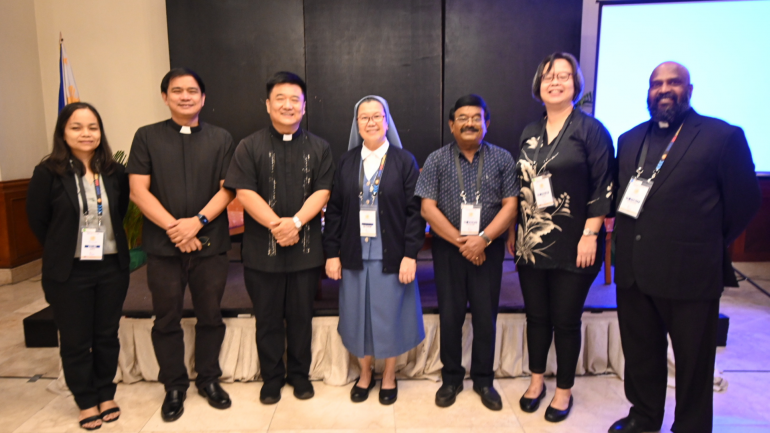
Media and Mission
Dr. Magimai Pragasam cautioned that the media often glorifies violence, sex, and sensationalism. “Communication means nothing without concrete action,” he stressed, urging communicators to anchor their work in truth, compassion, and social transformation.
Fr. John Mi Shen highlighted the enduring power of radio, especially in times of crisis. He cited the experience of Radio Veritas Asia (RVA) in China, where it became “a true voice of hope and a beacon of light in times of darkness.” He reminded participants that communication must inspire and unite rather than compete, saying, “True communication involves building relationships and fostering community.”
Meanwhile, Fr. Emmanuel Alfonso, SJ, drew attention to the cultural impact of film and mainstream media, noting that many popular movies today distort values. He emphasized the need for capacity building among young people, guiding them to use media responsibly and creatively as instruments of truth and goodness.
Faith and Culture Encounter
To cap the day’s activities, participants went on a cultural and faith exposure tour that included visits to the University of Santo Tomas (UST) and the historic Quiapo Church, where they received special blessings. The group also visited TV Maria studios, where they had an orientation and a hands-on media exposure experience.
Through dialogue, reflection, and shared experiences, Day 2 of the SIGNIS Asia Assembly strengthened participants’ sense of mission as communicators, committed to listening deeply, speaking truthfully, and radiating the hope of the Gospel across Asia’s diverse digital landscapes.
Radio Veritas Asia (RVA), a media platform of the Catholic Church, aims to share Christ. RVA started in 1969 as a continental Catholic radio station to serve Asian countries in their respective local language, thus earning the tag “the Voice of Asian Christianity.” Responding to the emerging context, RVA embraced media platforms to connect with the global Asian audience via its 21 language websites and various social media platforms.









